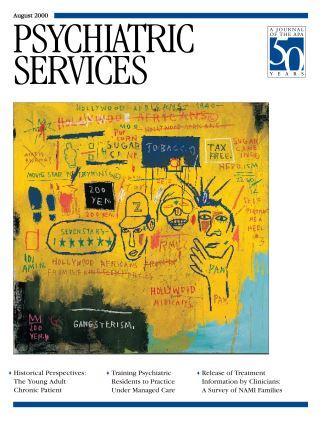Child and adolescent obsessive-compulsive disorder (OCD) is not commonly seen except by practitioners who specialize in childhood anxiety disorders. Hence many clinicians might not be familiar with the most efficacious or effective treatments for this disorder. The stated purpose of this book is to "help clinicians treat children and adolescents with OCD, and also to some extent OC-spectrum disorders, such as trichotillomania." Moreover, the book is intended for therapists of many different professional backgrounds. The authors have met their goals in providing a very readable treatment manual about a cognitive-behavioral treatment protocol for pediatric obsessive-compulsive disorder.
Over the past few years, March and Mulle have made significant contributions to our understanding of how to treat child and adolescent obsessive-compulsive disorder with cognitive-behavioral therapy, as in their 1996 book chapter (
1). Their commitment to empirically assessing the effectiveness of their cognitive-behavioral program is highly commendable. This book represents the culmination of their work to date.
The book is written in a clear, straightforward, and organized style consistent with the treatment approach. It is really much more than a treatment manual, and it avoids the dry tone inherent in many treatment manuals.
The book is organized into three parts. The first consists of three chapters that discuss the nature and assessment of pediatric obsessive-compulsive disorder and provide an overview of the treatment program. The assessment chapter is thorough and practical; the clinician-friendly approach is evident here. The authors describe the assessment procedures used in their anxiety disorders clinic in enough detail to allow clinicians to adapt the assessment protocol, as well as the treatment protocol described later in the book, to their own practice setting.
The 13 chapters of part 2 address the treatment program. The 12-to-20-session approach involves four phases: psychoeducation, cognitive training, mapping obsessive-compulsive disorder, and graded exposure and relapse prevention. The treatment is clearly explained, step by step and session by session, with one chapter devoted to most sessions. The authors' treatment approach is creative, flexible, developmentally appropriate, and systemic. For example, Michael White's strategy (
2) of externalizing the problem is an integral component of their treatment.
Clinicians well versed in cognitive-behavioral therapy are still likely to find useful suggestions that can inform their practice. Therapists with a family systems perspective will notice areas of the treatment protocol that might benefit from more family involvement.
The third part, with four chapters, is aptly labeled "troubleshooting." Common pitfalls in treatment, family issues, and school considerations are discussed. Pharmacotherapy is also addressed. In addition, three appendixes contain handouts, assessment instruments, and information for parents. This is an important section for fine-tuning treatment, and it reflects the book's practical approach to treatment of pediatric obsessive-compulsive disorder.
OCD in Children and Adolescents is a highly informative and pragmatic how-to resource for a comprehensive, empirically supported cognitive-behavioral approach for pediatric obsessive-compulsive disorder. The authors' suggestion to read the whole book rather than just particular sections should be heeded. The book is likely to be very helpful to child therapist trainees, child mental health clinicians, and clinical supervisors interested in an effective treatment approach for children and adolescents with obsessive-compulsive disorder.

